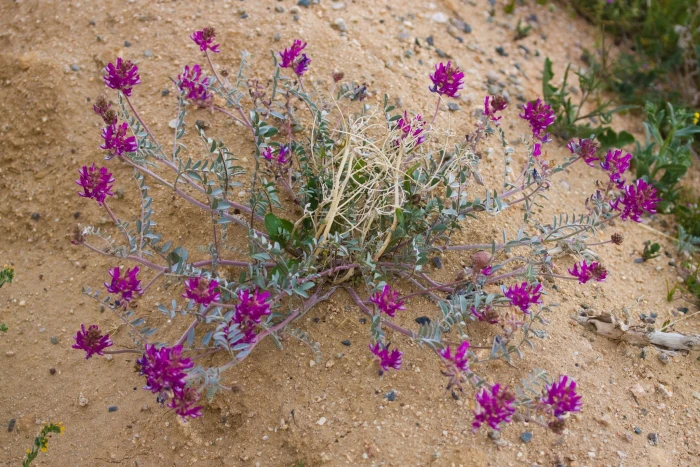Spotted Locoweed
(Astragalus lentiginosus)
Spotted Locoweed (Astragalus lentiginosus)
/
/

© Ken-ichi Ueda
CC BY 4.0
Image By:
© Ken-ichi Ueda
Recorded By:
Copyright:
CC BY 4.0
Copyright Notice:
Photo by: © Ken-ichi Ueda | License Type: CC BY 4.0 | License URL: http://creativecommons.org/licenses/by/4.0/ | Uploader: kueda | Publisher: iNaturalist |
























Estimated Native Range
Climate Requirements for Hanover Park, Illinois
| This Plant | Your Site | Plant Suitability for Your Location | ||
|---|---|---|---|---|
| • Precipitation | 3" - 55" | 36" | Aquatic | Aquatic |
| • High Temp. | 63°F - 110°F | 85°F | Your summer temperatures are normal for this plant. | Excellent |
| • Low Temp. | 1°F - 58°F | 13°F | Your winter temperatures are normal for this plant | Excellent |
This plant may not grow well at your location - your precipitation is too high.
Summary
Astragalus lentiginosus, commonly known as Spotted Locoweed or Freckled Milkvetch, is a perennial or occasionally annual herb that is part of the legume family. It is native to a variety of habitats in western North America, including sagebrush, open woodlands, grasslands, and areas with alkaline soils, from the Rocky Mountains to the California Coast Ranges, and from southern Mexico to British Columbia. Typically, it reaches a height of 0.3 to 2 feet with a similar spread. The plant has pinnately compound leaves up to 6 inches long with numerous small leaflets and an inflorescence that can hold up to 50 pea-like flowers. The flowers, blooming from April to July, range in color from purplish to whitish, and are followed by distinctive inflated, beaked legume pods.
Spotted Locoweed is valued for its nitrogen-fixing ability, which can improve soil fertility, and its drought tolerance, making it suitable for xeriscaping. It is also used in habitat restoration projects. While it is not typically used in ornamental horticulture, it can be found in native plant gardens and naturalized areas. Spotted Locoweed requires well-drained soils, tolerates a range of soil types, including those with high calcium carbonate, and thrives in full sun to part shade. Gardeners should be cautious as it can be toxic to livestock and can accumulate selenium.CC BY-SA 4.0
Spotted Locoweed is valued for its nitrogen-fixing ability, which can improve soil fertility, and its drought tolerance, making it suitable for xeriscaping. It is also used in habitat restoration projects. While it is not typically used in ornamental horticulture, it can be found in native plant gardens and naturalized areas. Spotted Locoweed requires well-drained soils, tolerates a range of soil types, including those with high calcium carbonate, and thrives in full sun to part shade. Gardeners should be cautious as it can be toxic to livestock and can accumulate selenium.CC BY-SA 4.0
Plant Description
- Plant Type: Shrub, Herb
- Height: 0.5-2 feet
- Width: 0.5-2 feet
- Growth Rate: Moderate
- Flower Color: Purple, White, Yellow
- Flowering Season: Spring, Summer
- Leaf Retention: Deciduous
Growth Requirements
- Sun: Full Sun, Part Shade
- Water: Low, Medium
- Drainage: Fast, Medium
Common Uses
Drought Tolerant, Low Maintenance, Showy Flowers
Natural Habitat
Native to sagebrush, open woodlands, grasslands, and areas with alkaline soils in western North America
Other Names
Common Names: Loco Weed, Speckledpod Milkvetch, Mottled Milkvetch, Spotted Locoweed
Scientific Names: Astragalus lentiginosus, Astragalus arthurschottii, Astragalus lentiginosus, Astragalus lentiginosus var. mcdougallii, Astragalus lentiginosus var. typicus, Astragalus pseudoiodanthus, Astragalus tehatchapiensis, Cystium lentiginosum, Cystium tehachapiense
GBIF Accepted Name: Astragalus lentiginosus